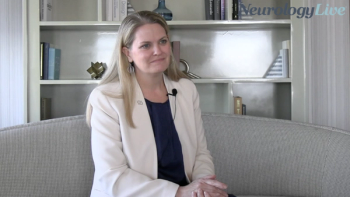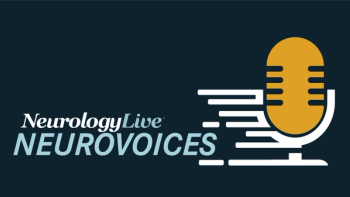
Exploring the Association Between Large Breast Size and Headache Disorders: Kristyn Pocock, MD
The assistant professor of neurology at Wake Forest Baptist Atrium Health discussed emerging research on how breast size may contribute to headache disorders, including migraine. [WATCH TIME: 5 minutes]
WATCH TIME: 5 minutes
"While some insurances acknowledge that headache is one reason to get a breast reduction, from the headache perspective, we don't know enough about which types of migraine and which cohorts of women with migraine will experience benefit. I've seen both groups of women, those who experience dramatic improvement of their migraine after breast tissue reduction, and those who see no improvement of migraine after their breast reduction."
Headache associated with enlarged breast tissue, known as macromastia, has generally been assumed to be tension-type in prior literature. A recent prospective cohort study of 34 women with headache undergoing breast tissue reduction revealed that 91% of the women screened positive for migraine, challenging the assumption that these were tension-type headache. Following breast tissue reduction, additional findings showed that headache frequency, severity, disability, cutaneous allodynia, and sleep apnea risk significantly improved at 12-16 weeks post operative.
Factors that contribute to macromastia-related headache pathophysiology can include obesity, sleep apnea, and changes in mood, sleep quality, and physical activity. Kristyn Pocock, MD, assistant professor of neurology at Wake Forest Baptist Atrium Health, presented on this headache topic at the recently concluded
At the meeting, Pocock sat down with NeurologyLive® to outline the multifactorial ways breast size may influence headache and migraine risk, including mechanical strain on the cervical spine, inflammatory and hormonal effects of adipose tissue, psychological comorbidities like anxiety and depression, and lifestyle factors such as exercise and sleep. She highlighted new research suggesting that large breast tissue could be specifically associated to migraine, which was previously undocumented, and emphasized the importance of ongoing studies to better inform patient care and surgical decision-making.
REFERENCES
1. Pocock K. Understanding the Headache of Enlarged Breast Tissue (Macromastia) and Impact of Surgery: A Prospective Cohort Study. Presented at: 2025 AHS Annual Meeting; June 19-22; Minneapolis, MN. Scientific Abstracts 1 OR-06.
Newsletter
Keep your finger on the pulse of neurology—subscribe to NeurologyLive for expert interviews, new data, and breakthrough treatment updates.


































